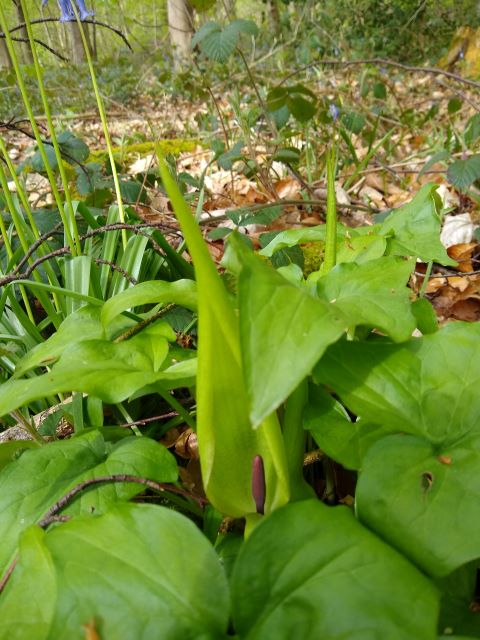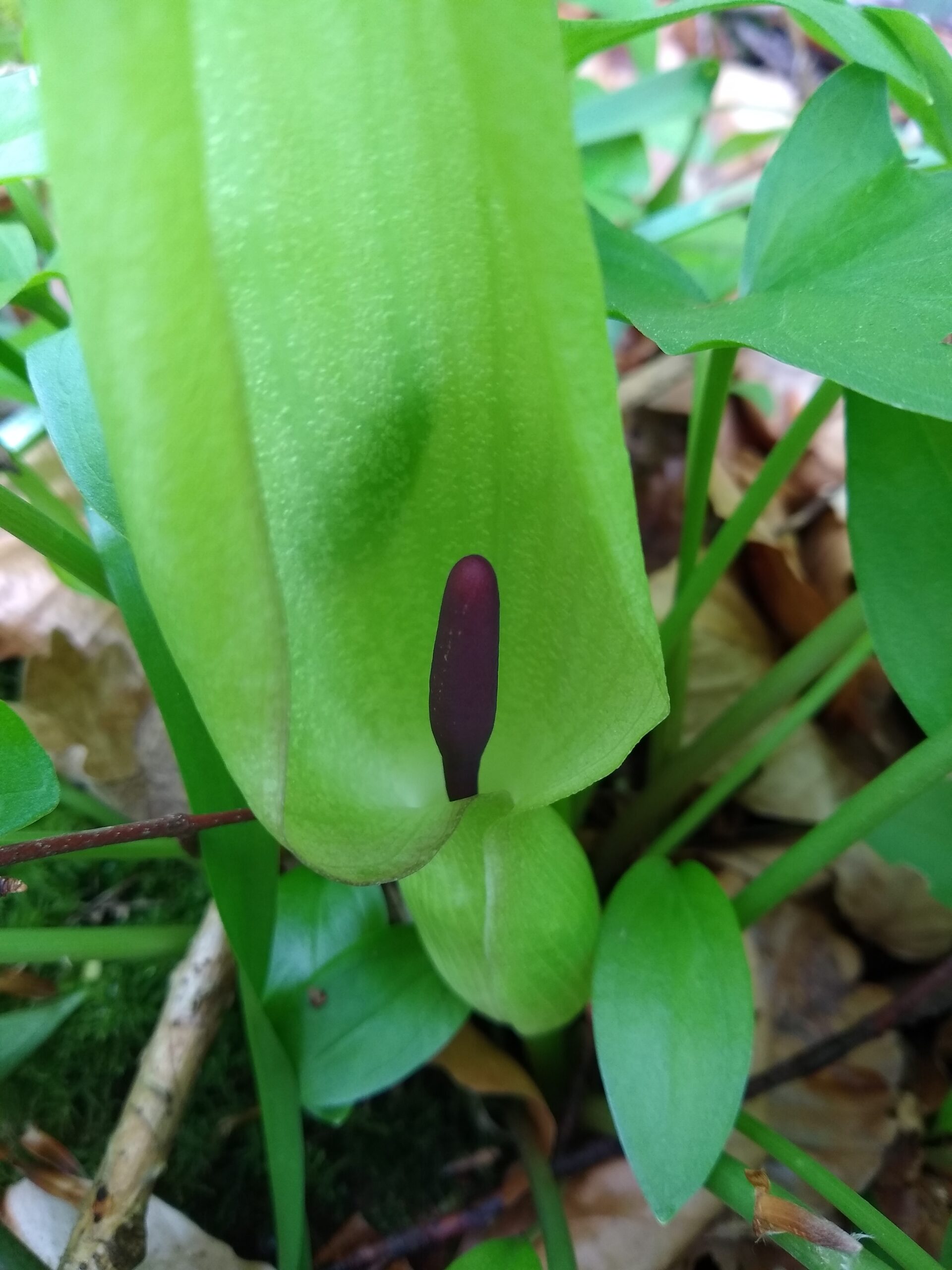Plants
Most plants let hungry insects rub against them, but lords and ladies have a trap. By having a rotten-smelling flower called a spadex, they attract owl midge flies (who want to lay eggs on rotting leaves). Once the flies slide inside the flower, the lords and ladies trap them, forcing them to brush off pollen and get showered in more before being released.
Recently, we went to our woods and found a lords and ladies in bloom!


While lords and ladies trap pollinators, willows don’t even use them! Instead, a male willow’s flowers release a pollen cloud that will hopefully reach a female willow tree.
Invertebrates
Like most plants, each ash black slug has both a female and male part. The slug lays down scented slime to attract another. The two slugs twist together in order to transfer sperm.
While mason bees have both males and females, the male only lives for a short time—just long enough to mate. Soon after mating, the female mason bee lays her eggs in an empty snail shell, before proceeding to fill it with food. After blocking the entrance, the mason bee hides the shell in some dead grass.
Heading to the river, after seizing a patch of leaves, the male banded demoiselle damselfly invites a female and shows how well the water flows. Before transferring the sperm from the back of his neck, the male removes any rival sperm. Diving underwater, the female cuts into a leaf where she will lay her eggs.
An insect that spends the majority of its life underwater is the mayfly. After hatching, mayfly nymphs spend a year at the bottom of a river, before emerging from the water and shedding their skin. The male mayfly then undergoes a second moult. He then proceeds to fly up and down to impress a female.
Back on the surface of the water, a female raft spider lays down a scented thread for a male to follow. The male taps the water to announce his arrival.
Mammals
As well as raft spiders, scent is important to brown hares and rabbits. After scenting out a female, a male brown hare must complete three tasks: first, match the female’s boxing strength; then show his speed; and finally, defeat his rivals. Meanwhile, scent has a different purpose for rabbits: a male offers a female his scent and wee until accepted.
Bigger mammals, like grey seals and red deer, may fight in order to mate. While a grey seal fights to control a group of females on a certain stretch of beach, male red deer duel with their antlers to mate with a herd of females.
Birds
Mammals aren’t the only ones who may compete to breed, male black grouse gather in leks and fight to stay in the middle. The males make a gurgling sound to attract the females.
A male capercaillie also sings to attract females. These birds are extremely dedicated, singing for six hours. The male mates with more than one female.
Song isn’t a bird’s only offering: a male hen harrier performs a sky dance and gives a female food so she hopefully accepts him. The female makes a nest in the heather and both parents work to take care of the chicks.
Puffins may only have one chick at a time, but both parents still work together to raise the puffling in their burrow.
Unlike puffins, a pair of great crested grebes spend time apart. Once they have located each other, they perform their courtship consisting of cat pose and weed dance.
Both manx shearwater and gannets spend winter apart, mating in summer. They both arrive in great numbers, with nearly the world’s entire shearwater population coming to our shores. Bass Rock, an island just off the Scottish coast, is a gannet nesting site. At approximately 28000 square metres, every single square metre of the island roughly houses two gannet nests.
Fish
Fish, like Atlantic salmon, may also travel to breeding grounds. The Atlantic salmon travel upriver, sometimes making three-metre high leaps up waterfalls on the way. In autumn, a female will dig a redd with her tail to lay her eggs in. This is similar to how a female cuttlefish squirts water to clear an area to lay her eggs in.
An extremely unique way of fertilising and laying eggs belongs to the seahorse. A female spiny seahorse lays her eggs in a male’s tail. After fertilisation, the male carries the eggs in a special pouch.
Reptiles and Amphibians
After sniffing out a female, a male adder taps the female with his head and uses his coils to massage her. Then, he latches on long enough to transfer his sperm.
A male common toad also latches onto a female, not to transfer sperm but to hitch a ride to her birthplace. In fact, he only fertilises the eggs after they’ve been laid.

